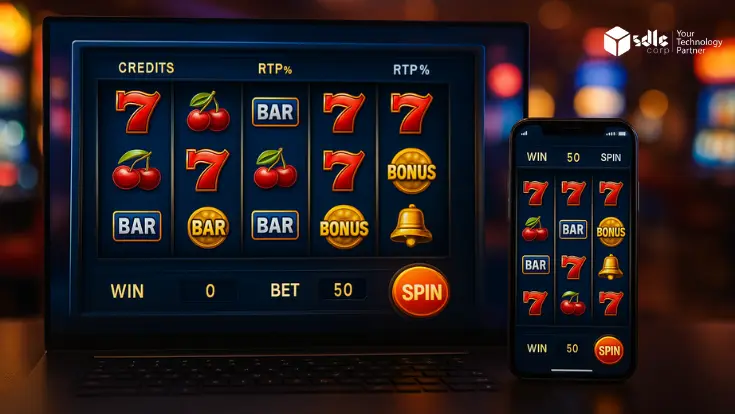In recent years, cozy games have gained immense popularity for their ability to offer players a relaxing, stress-free environment. Unlike high-octane action games, cozy games prioritize comfort, emotional warmth, and peaceful interaction. However, creating a game that remains engaging while being relaxing requires a fine balance in game mechanics. Developers need to ensure that while players find joy in the simplicity of the game, they don’t lose interest due to a lack of challenge. This delicate balance lies at the heart of the cozy game genre and is crucial for both player satisfaction and retention.
When crafting cozy games, developers must consider a range of elements such as pacing, difficulty level, feedback loops, and progression. The ultimate goal is to create a game that players can enjoy at their own pace without feeling overwhelmed or under-stimulated. Whether it’s farming in Stardew Valley, exploring in Animal Crossing, or solving puzzles in Unpacking, these games demonstrate how thoughtful game design can achieve relaxation while keeping players invested.
In this blog, we will explore the key strategies developers use to strike a balance between relaxation and engagement in cozy games. We’ll also discuss how these techniques contribute to a memorable and delightful gaming experience. For companies specializing in game development services and game development, mastering this balance is essential for creating cozy games that resonate with today’s audience.
Start Crafting Your Own Cozy Game with Expert Development Services Today!
Our expert team is here to guide you every step of the way.

The Foundations of Cozy Game Mechanics
At the core of any cozy game is the need for it to feel stress-free. Players often come to these games looking for a sense of escape and relaxation. But how do developers ensure that their games provide this experience while still engaging the player?
The key lies in designing mechanics that reduce cognitive load and create a sense of agency. Players should never feel like they’re racing against the clock, nor should they face steep learning curves. On the other hand, they need to feel a sense of progression and purpose, whether it’s upgrading a farm, unlocking new recipes, or expanding a town.
Pacing: The Rhythm of Relaxation
Pacing is one of the most important elements when designing a cozy game. If the game is too fast-paced, it can induce stress, defeating the purpose of the genre. If it’s too slow, the player may lose interest.
The ideal cozy game offers a steady flow of activities, with ample opportunities for players to stop, reflect, and engage at their own pace. Animal Crossing: New Horizons is an excellent example. Its in-game clock moves in real-time, allowing players to engage with the world on their own terms. The absence of time-sensitive challenges means players can relax without feeling pressured to complete tasks.
Similarly, games like Stardew Valley allow players to progress at their own speed. There’s no rush to achieve milestones, and tasks like farming, fishing, and mining offer a meditative experience.
Low-Stress Challenges
One of the hallmarks of cozy games is that challenges are present, but they are non-threatening. Players need to feel a sense of accomplishment without the high stakes associated with more intense games.
Take the example of resource management in games like Stardew Valley. While players need to manage their time, energy, and money, the consequences of failure are minimal. There’s always tomorrow to harvest those crops or go fishing. This approach creates a laid-back atmosphere while maintaining a layer of strategy that keeps the player invested.
Additionally, games like Unpacking present challenges that are both simple and satisfying. The puzzle of arranging objects in a room is soothing, as there’s no time limit or incorrect way to solve it. The challenge lies in the player’s personal creativity, offering a form of low-stress engagement.
Crafting Engagement Through Mechanics
While the relaxation aspect of cozy games is crucial, developers must also ensure the game remains engaging. This involves offering layers of complexity without overwhelming the player. Successful cozy games introduce mechanics that deepen the experience without creating friction.
Progression Systems
Progression is a vital aspect of cozy games, but it must be subtle and rewarding. A common technique is to offer unlockable content that the player can work towards without feeling rushed. This provides a sense of long-term purpose, which keeps players coming back.
In Animal Crossing, players gradually unlock new items, buildings, and decorations as they develop their island. The joy of customization drives engagement, while the relaxed pace prevents the game from feeling like a chore.
In Stardew Valley, progression takes the form of upgrading tools, expanding your farm, and building relationships with villagers. The satisfaction of seeing your farm grow over time offers a subtle sense of achievement that keeps players invested without causing stress.
Feedback Loops and Reward Systems
Another critical component is positive feedback loops. Cozy games often reward players for their actions in gentle, satisfying ways. Whether it’s receiving a thank-you note from a villager or seeing crops flourish after watering them, players feel that their efforts are appreciated and rewarded.
These feedback loops reinforce engagement without relying on high-stakes challenges. The key is to make rewards feel personal and meaningful, not just mechanical. For instance, in Stardew Valley, building relationships with NPCs unlocks new dialogue and events, which deepen the player’s emotional connection to the game world.
Player Agency and Choice
Cozy games thrive on giving players control over their experience. Offering meaningful choices empowers players to shape their world, which enhances engagement. This can take many forms, from customizing a character’s appearance to designing a virtual space.
In Animal Crossing, for example, players can personalize everything from the layout of their island to the design of their home. This level of customization allows for creativity while keeping the experience stress-free.
Similarly, in Stardew Valley, players have the freedom to decide how they want to spend their day, whether it’s farming, fishing, or mining. The open-ended nature of the game allows players to tailor their experience to their preferences, making the game feel more personal and engaging.
Finding the Balance: Trial and Error in Development
The process of balancing relaxation and engagement in cozy games often involves trial and error. Developers must test various mechanics to see how they affect player experience. Playtesting is crucial to understanding how different players interact with the game.
It’s also important to remember that different players will have different thresholds for relaxation and engagement. Some players may prefer a more meditative experience, while others enjoy a bit more complexity. Offering options for customization and difficulty can help accommodate a wider audience.
The Role of Aesthetics and Sound Design
In cozy games, aesthetics and sound design play a pivotal role in maintaining the right balance between relaxation and engagement. Calm, pastel color schemes and soothing soundtracks can create an immersive, relaxing environment. Ambient sounds, such as rustling leaves or the soft hum of background music, contribute to the overall feeling of tranquility.
Animal Crossing is a great example of how art style and sound design enhance relaxation. Its gentle, cartoonish visuals and mellow background music create an inviting atmosphere that complements the game’s laid-back mechanics.
Similarly, in Unpacking, the subtle sound of boxes being opened and items being placed adds to the sense of calm. The minimalist visuals and soft colors help maintain focus on the task at hand, allowing players to relax while engaging with the puzzle elements of the game.
The Future of Cozy Games: Evolving Mechanics
Foley sounds, or sounds created specifically to mimic everyday la
As cozy games continue to grow in popularity, developers are experimenting with new mechanics to further enhance the balance between relaxation and engagement. Procedural generation, for example, is being used to create endless, stress-free worlds that players can explore at their leisure.
AI-driven mechanics are also being explored, allowing for more dynamic and personalized experiences. These advancements will likely play a role in the evolution of cozy games, offering developers new ways to engage players without sacrificing the genre’s core appeal.
For companies offering game development services or those operating as a game development company, understanding and implementing these evolving mechanics is key to creating cozy games that stand out in an increasingly competitive market.ife, add an extra layer of realism and immersion to cozy games. In a game where the player spends their time planting, fishing, or walking through nature, every sound effect can heighten the sense of being in a living, breathing world.
For example, the rustle of a player’s clothes as they walk, the crunch of snow underfoot, or the splash of water during a fishing mini-game are all Foley sounds that can enhance a cozy game’s realism. In many cozy games, these sounds are kept gentle and unobtrusive, allowing them to add immersion without breaking the game’s tranquil tone.
Example: Cozy Grove
In Cozy Grove, players interact with a living world filled with spirits and nature. The sounds of footsteps in the sand, the crackle of a campfire, and the flutter of leaves as you move through the environment all add a sense of place and immersion, making the player feel like part of the world.
Immersive cozy games with the right tools and game engines, and bring your relaxing game worlds to life effortlessly.

Conclusion
Balancing game mechanics for relaxation and engagement in cozy games requires a careful blend of thoughtful pacing, low-stress challenges, and meaningful progression. By focusing on player agency, positive feedback loops, and rewarding aesthetics, developers can craft experiences that are both calming and engaging.
As the cozy game genre evolves, developers will continue to innovate, experimenting with new technologies and mechanics to create more immersive and relaxing experiences. Whether through procedural generation or AI-driven mechanics, the future of cozy games promises to offer even more ways for players to find joy in the simple pleasures of gaming.
For companies specializing in Game Development Services or operating as a Game Development Company, mastering the art of balancing these elements will be crucial for success in this growing niche market. By understanding the delicate interplay between relaxation and engagement, developers can create cozy games that resonate deeply with players and keep them coming back for more.



